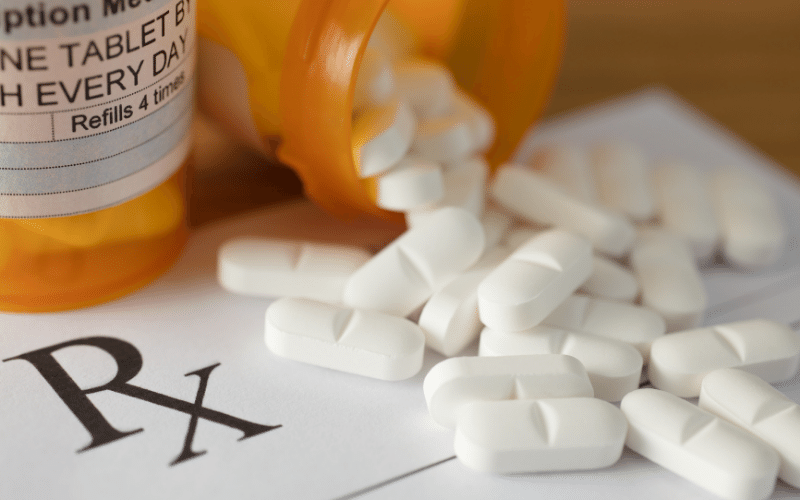Scientific studies continuously conclude that adolescents are far more prone to developing drug addiction than adults. Adolescents and substance abuse are often impossible to separate. Peer pressure and the urge to experiment and shifting behavioral changes that can pass as teenage behavior can all make substance use go under the radar for parents and caregivers.
Substance Use Among Teenagers
Many organizations keep track of substance use among teenagers to understand when, how, and what happens after teenagers start using drugs and alcohol. According to the CDC, adolescent substance use highlights:
- Nearly half of 9th through 12th graders reported using marijuana at one point in their lifetime.
- Among adolescents, close to 14% use prescription drugs without prescriptions.
- In 2017, close to 20% of high-school students were marijuana users.
- Around 6.6% of teenagers use some hallucinogens, such as LSD or mushrooms.
- Close to 5% of adolescents use cocaine and another 2.5% use methamphetamines.
Risk of Substance Use
Beyond the fact that substance use can cause school and personal relationships issues, the mere use of taking illicit drugs can lead to various health problems, including:
- Develop brain and growth issues.
- Engage more frequently in risky behaviors.
- Contribute to adult health problems.
- Onset heart disease, sleep disorders, and high blood pressure.
Not to mention, the earlier adolescents start using substances, the higher their chances of developing substance use disorder later in life.
The Effects on the Brain
In a comprehensive study, researchers found that adolescents are indeed more prone to drug addiction than adults. Teenagers have dopamine-rich neurons that derive an intense sense of euphoria from taking drugs, which leads to the development of psychological dependency.
Essentially, this makes adolescents have a lower neurological tolerance to the effects of drugs. The molecule elF2a plays a significant role in these findings – it was discovered that by tweaking this molecule within the brain, addiction could be fought in adolescents and adults.
How Drug Use Turns Into Addiction
Despite popular belief, willpower isn’t enough to prevent addiction. The brain is designed to encourage life-sustaining activities through the release of dopamine. Drugs can hijack this process and flood the brain’s reward circuits with so much dopamine that natural experiences such as exercise or spending time with friends can’t recreate.
Adolescents’ brains start struggling with self-control impulses, making teens more likely to retake drugs without considering the consequences. When the cycle continues, the brain keeps reinforcing the pleasure from drug-taking and evolves to make the connection stronger.
The majority of teenagers that start using drugs before age 18 will develop a substance use disorder by age 20. The sooner they start experimenting with drugs, the higher the chances. For example, close to 25% of people who begin misusing prescription drugs at age 13 or younger will develop a substance use disorder.
Preventing Drug Addiction in Adolescents
Unfortunately, no matter how extensive and detailed preventative measures are, adolescents will do what they’re going to do. Education is imperative, but it is not always successful in preventing future cases of abuse.
Parents must create a supportive and safe environment for them to talk about substance use openly. To set up an open line of communication, consider saying something along these lines:
“Hey, honey. When I was your age, I started smoking a lot of pot and drinking; I know how it goes. I also know that there are a lot of weird and dangerous drugs out there now. All I want is to make sure you know that you can talk to me about anything that’s going on – I won’t ever get mad at you if you’re honest with me. All I want is for you to be safe and smart.”
Early interventions can prevent drug abuse from getting out of control, removing the need for higher levels of care. When approaching your child about drug or alcohol use, come from a place of love and understanding rather than disapproval and accusation.
Why Adolescents’ Drug Use and Treatment Differs from Adults
Teenagers in treatment often report abusing different substances than adults. For example, more people ages 12-17 seek treatment for marijuana use than for alcohol use, whereas adults are the opposite.
Adolescents are also less likely than adults to report withdrawal symptoms, but they’re more likely than adults to hide their substance use and continue the use despite legal trouble. Also, they’re less likely to feel they need help or seek treatment. Not to mention, they have more difficulty noticing their behavior patterns to realize they need help.
Unfortunately, only 10% of adolescents who need substance abuse treatment receive any services. When they do, the majority come from the juvenile justice system. In 2008, on any given day, 184 teenagers sought treatment when referred by the juvenile justice system, versus only 63 who self-commit.
When to Seek Treatment
Parents need to be aware of behavioral changes in their children and discuss with their doctors to figure out if their child is using drugs. Beware of:
- Erratic behavior
- Depression or mood swings
- A sudden change in friends
- Declining school performance
- Loss of interests in previously favorite activities
Keep in mind; adolescents are also susceptible to mental health illnesses that might prompt them to turn to illicit drugs. Treating and addressing underlying mental health conditions can help prevent a substance use disorder. If you find drugs or drug paraphernalia discussing your concerns with your children is critical to establish an open communication relationship.
Be on the lookout for warning signs such as red and heavy-lidded eyes, constricted pupils, and out-of-nowhere reckless behavior. If you strongly believe your child is misusing drugs, talk to them. Do your best to remain calm and supportive more than anything. Discuss the possibility of visiting a therapist to discuss what’s troubling them openly. Don’t set any expectations or try to force them to seek treatment.
Treating Adolescent Drug Addiction
There are many approaches to treat adolescents and drug addiction. Although not as much is known about the treatment of teenage drug and alcohol treatment as adult treatment, there have been some studies that point toward family therapy and cognitive behavioral therapy.
Whether teenagers receive treatment in residential or outpatient settings, evidence-treatment programs primarily consist of behavioral therapy and ongoing support.
Unlike adults, medication-assisted programs are not approved by the US Food Drug Administration (FDA) for adolescents. However, there’s some preliminary evidence that suggests medications may assist teenagers in achieving abstinence. Providers may still recommend medication-assisted programs on a case-by-case basis when developing a personalized treatment plan.
Regardless of a person’s age, addiction treatment is never a one-size-fits-all. It’s paramount to look at their developmental stage, cognitive abilities, the influence of family and friends, and the influence of mental or physical health conditions. Addressing other issues parallel to substance abuse is key to long term sobriety.
Addiction treatment centers understand the complications of managing young patients and their dependency. Sometimes family members may or may not be supportive of recovery, which can become a setback for struggling young addicts.
The Importance of Aftercare Support
Seeking drug addiction treatment is only the first step in a complicated recovery process. When adolescents need substance abuse treatment, aftercare support is key to helping teens stay off drugs and improving their quality of life. Sometimes, they enlist in mutual-help groups like 12-step programs to receive the support they need.
Relapse is a possibility for anyone—around 60% of people who seek treatment relapse after one year of completing their programs. However, relapse isn’t a sign of treatment failure. To prevent relapse, follow-up treatments, and aftercare programs must be in place.
Recovery support programs should never substitute formal evidence-based treatment. They’re a way to help recovering addicts maintain a positive lifestyle that promotes healthy relationships and habits outside therapy.
If someone experiences a relapse and aftercare programs don’t seem to help them stay in their recovery path, sometimes checking into a treatment center is the only way to prevent relapse. In this case, patients will go back to an intense addiction treatment program to find the right skills to manage their addiction and live a long-term sober and clean life.
Finding Treatment for Teenagers
Many parents fall for the mistake of blaming themselves for their adolescents and their drug addiction. In reality, genetics, peer pressure, and other environmental factors play a role in addiction development. If you’re worried your children may be using drugs, consult with an addiction specialist.
At Lighthouse Recovery Institute, our therapists look at each patient on a case-by-case scenario. We believe in developing comprehensive and personalized treatment programs designed to address each person’s individual needs. Thanks to this approach, we can help people develop the skills they require to manage their addiction and live a healthy, sober, and clean life.
Of course, we know there are hiccups and setbacks in every recovery journey, which is why we also provide aftercare support programs to help recovering addicts find the life skills they need to reenter society.
If you believe your child is struggling with substance abuse, don’t hesitate to call. Our admission specialists are always available to answer questions, offer our sincere support, and guide you on the best way to help your children find the right treatment plan to defeat their addiction.









